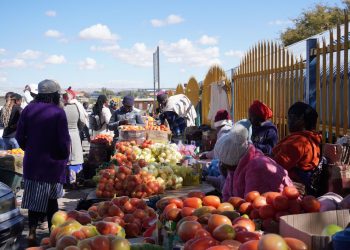
The Bank of Namibia says the country’s international reserves have dropped by N$3.7 billion to N$57.1 billion as of September 2024, from N$60.8 billion at the end of July this year.
The Central Bank Governor Johannes !Gawaxab said the decline, driven by net commercial bank outflows, customer foreign currency withdrawals, and government payments, still provides an adequate import cover of 3.9 months.
The developments come after the Bank’s Monetary Policy Committee (MPC) meeting on 14-15 October, where the repo rate was reduced by 25 basis points to 7.25% to support economic recovery while maintaining the currency peg with South Africa.
“The stock of international reserves stood at N$57.1 billion as of the 30th of September 2024 compared to N$60.8 billion at the end of July 2024. The decline was mainly driven by net commercial bank outflows, customer foreign currency withdrawals, foreign government payments and the appreciation of the exchange rate,” said the Governor.
On the other hand, domestic economic activity rose during the first eight months of 2024 relative to the same period in 2023.
“The recovery was broad-based, with notable increases in the mining, electricity generation, wholesale and retail trade, tourism, financial services, communication and transport sectors as well as the livestock marketing subsector,†!Gawaxab noted.
The pace of expansion nevertheless lost momentum as the Namibian economy recorded a slower growth rate of 3.5% during the second quarter of 2024, compared to 4.3% and 3.6% in the preceding quarter and the corresponding quarter of 2023, respectively.
Looking ahead, !Gawaxab said growth is projected to moderate to 3.1% in 2024 and 3.9% in 2025, compared to a firmer pace of 4.2% recorded in 2023.
“The anticipated slowdown is primarily attributed to the weakening primary industry, partly reflecting the prevailing drought conditions and sluggish global demand,” the Governor said.
Risks to the domestic economic outlook stemming from external factors have intensified, while those from domestic factors remained broadly unchanged since the last MPC meeting.
“External risks include the escalation of geopolitical tensions, especially in the Middle East, geoeconomic fragmentation and weaker global demand. Internally, drought conditions and water supply interruptions, particularly at the coastal towns, continue to pose risks,” he said.
Discussing the monetary policy stance, the MPC noted the growing momentum in the international monetary policy easing cycle, the retreat in domestic inflation over the medium term, along with the recent downside surprise in the September 2024 inflation print.
The MPC also noted that the domestic economy, while growing at a moderate pace, was operating below full capacity, with private sector credit extension remaining subdued. This suggested that further support to the domestic economy is warranted.
In deciding on this policy stance, “the committee was wary of the renewed widening of the policy rate differential with the anchor country, South Africa, but was comforted by Namibia’s recent experience of orderly capital flows along with adequate levels of international reserves”.
Thus, the newly adopted policy stance will continue to safeguard the one-to-one link between the Namibia Dollar and the South African Rand while supporting domestic economic activity.











